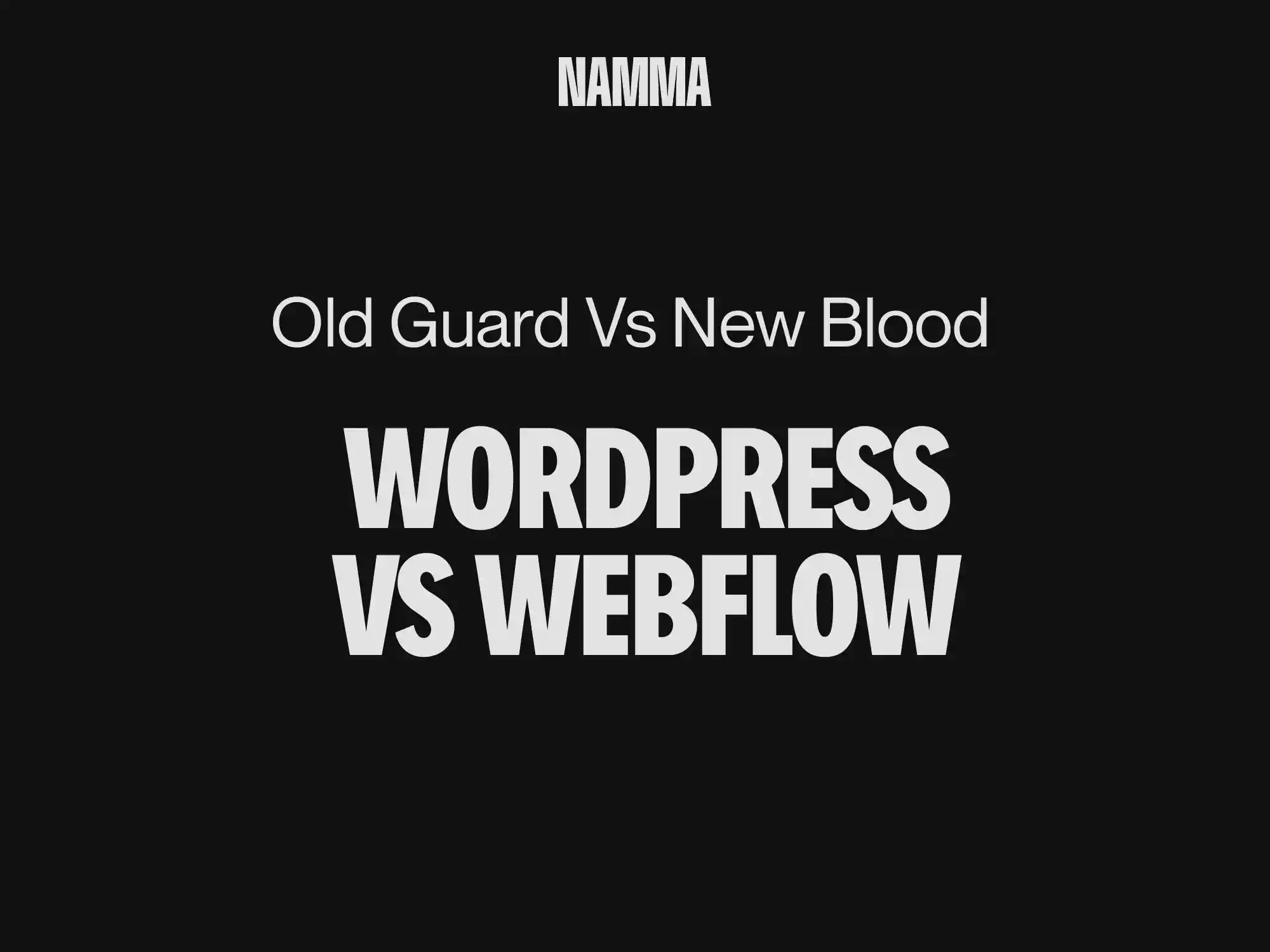Web Design VS Development: Stop confusing them
"Oh, you build websites? Can you fix my printer?"
If that question makes your skin crawl, wait until you see the chaos around web design and web development. These two disciplines are constantly confused, blended, and butchered—even by people who should know better.
Let’s stop the massacre. Here’s an unfiltered guide that actually explains the difference between designing a website and building it.
The fundamental difference: Looks VS Functionality
Don’t look any further:
Web Design = How it LOOKS
Web Development = How it WORKS
Simple? Yes. Oversimplified? A little. But that’s the core distinction most people fail to grasp.
The web designer creates the visuals, the user experience, the aesthetic soul of the project. The developer turns those visions into a working reality, building the technical architecture that makes the site exist.
According to Stack Overflow (2023), even tech recruiters get it wrong: 64% of job postings mix up design and development skills.
What. A. Mess.
The Web Designer: Way more than a “make-it-pretty person”
A web designer isn’t just picking nice colors and flashy fonts (though that’s part of the job).
What a web designer REALLY does:
- Designs the user interface (UI) and user experience (UX)
- Creates wireframes and prototypes
- Develops the brand’s visual identity
- Ensures accessibility and usability
- Maintains visual consistency across platforms
- Optimizes user flows
According to AIGA’s 2023 Design Census, 78% of web designers spend more time on user research and strategy than on pure visual creation. Surprising, right? It’s like picturing a chef who spends more time studying ingredients than cooking.
A designer’s toolkit:
- Figma, Sketch, Adobe XD for UI design
- Photoshop, Illustrator for graphics
- InVision, Marvel for prototyping
- Miro, Whimsical for wireframes
- UserTesting, Hotjar for user testing
We use these daily at Namma. Our last project for a fintech startup had us juggling five different platforms—and that was a small project.
.webp)
The Web Developer: Not just a “code monkey”
If you think developers are just geeks hammering out code in the dark while chugging Red Bull, you’ve missed a few seasons.
What a web developer REALLY does:
- Builds the site’s technical architecture
- Implements designs in HTML, CSS, and JavaScript (front-end)
- Develops server-side systems and features (back-end)
- Optimizes performance and loading speed
- Ensures cross-browser and responsive compatibility
- Maintains security and manages databases
The average web developer writes about 3.5 million lines of code in their career. That’s the equivalent of 58 copies of Harry Potter. Now imagine rereading that book 58 times to hunt for typos.
A developer’s toolkit:
- Code editors like VS Code, Sublime Text
- Version control systems like Git
- Frameworks like React, Angular, Vue.js (front-end)
- Node.js, Django, Laravel (back-end)
- Testing tools like Jest, Selenium
- Terminal, Docker, AWS for deployment
According to the State of JS survey, a web developer uses an average of 17 different technologies on a single project. And we wonder why they look stressed.
.webp)
The gray zone: where design and development overlap
The line between design and development keeps blurring. Like the line between good coffee and bad—you know it’s there, but it’s fuzzy.
Overlap zones:
- Design Systems: These standardized component libraries need both a designer’s eye and a developer’s discipline.
- HTML/CSS: Stack Overflow’s 2023 survey shows 67% of web designers know HTML/CSS, while 54% of front-end developers consider themselves proficient in UI design principles.
- Animations & interactions: High-end web animations demand close collaboration—designers create them, developers implement them. We learned this the hard way on a luxury project where smooth animations required 7 back-and-forth rounds between designers and devs.
- No-code & low-code: These tools blur boundaries, letting designers build without coding. It’s our specialty at Namma—and trust us, it requires just as much technical skill as creativity.
- According to Forrester Research (2022), low-code/no-code platforms are growing 40% annually, showing how the disciplines keep converging.
Why this distinction matters (and why it sometimes doesn’t)
Why it’s important:
- Realistic expectations : Knowing the difference helps set clear expectations. A designer won’t build your payment system, just like a back-end developer isn’t the best person to design your logo.
- Accurate budgeting : Upwork (2023) found that 47% of web projects go over budget due to poor role understanding.
- Better collaboration : Teams that clearly understand the distinction communicate better and deliver stronger results.
Why it can be overrated:
- Hybrid professionals : More pros are cultivating both skill sets. The 2023 State of Frontend survey shows 38% of front-end devs also identify as UX/UI designers.
- Evolving tools : Platforms like Webflow, Framer, and Wix reduce the technical gap between design and implementation.
- Small teams, many hats : In startups and small businesses, the same person often does both roles out of necessity.
The stereotypes (and why they’re ridiculous)
Let’s tear down a few stubborn clichés.
Web designer = Latte-sipping hipster in glasses
Reality: Nielsen Norman Group (2022) found web designers spend 43% of their time analyzing data and only 22% creating visuals. The rest? Meetings—just like everyone else.
Web developer = Socially awkward night owl coding in the dark
Reality: GitHub (2023) shows developers are most active between 10 a.m. and 4 p.m., not at 2 a.m. And contrary to the stereotype, a Stack Overflow study shows 68% of developers consider communication skills critical to their job. Our lead dev spends more time in meetings than coding—and he hates it.

How they work together (when it all goes right)
A solid web process usually looks like this:
- Research & planning: Designers and developers align on project goals.
- Wireframing & prototyping: Designers map out structure and flow while devs check technical feasibility.
- Visual design: Designers finalize the look while developers start building the framework.
- Development: Developers code the site with ongoing feedback from designers.
- Testing & iteration: The team refines the product together.
At Namma, this method has cut our delivery times by 34% in just two years. We never separate these teams—they work in the same room, on the same screens, from day one.
The result? Web projects where aesthetics and functionality align perfectly, delivered on time and without budget surprises. Don’t just take our word for it—see how this approach transformed our clients’ projects.
The future: convergence or specialization?
Two opposing trends are shaping the future:
Toward convergence
- No-code tools make development accessible to designers
- Front-end frameworks standardize implementation
- AI is starting to generate code from designs (Microsoft Copilot, GitHub Copilot)
Gartner predicts that by 2026, 65% of websites will be built using low-code/no-code platforms.
Toward specialization
- Increasing complexity of front-end and back-end tech
- New sub-specialties (3D web animations, design system architecture, etc.)
- Ever-higher user expectations
McKinsey reports that companies with highly specialized web teams outperform competitors by 21% in user engagement.
The uncomfortable truth
Here’s the thing: you probably need both.
A stunning website that doesn’t work is like a swimming pool with no water—impressive to look at, but dive in and you’ll regret it.
Web excellence comes from collaboration, not competition.
To sum it up
Web Design: The art of crafting engaging, intuitive, and visually coherent digital experiences.
Web Development: The engineering that transforms those concepts into functional, high-performance, and secure reality.
Different? Absolutely. Complementary? Undeniably. One more important than the other? Never.
So next time someone asks you to “just whip up a quick little website,” you’ll know why that request deserves a long talk about what “quick” and “little” really mean.
Article based on data from Stack Overflow, GitHub, Forrester Research, AIGA, Upwork, Nielsen Norman Group, Atlassian, Gartner, and McKinsey.
Work with us if average isn’t your thing.
Drop it, we'll build it!




